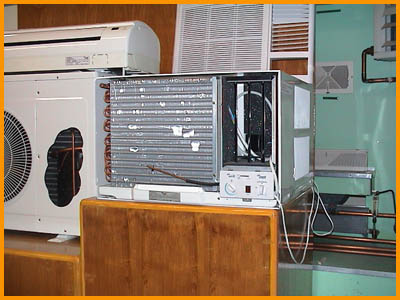Air-conditioning and Refrigeration Lab
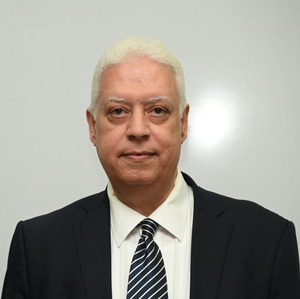
Director :Dr. Esmail MokheimerEmail:esmailm@kfupm.edu.sa
Location:75-410
Phone-94574
Short introduction of the lab and its key capabilities/mission
The laboratory is equipped with a wide variety of instructional facilities in the area of refrigeration and air-conditioning. The refrigeration area contains a reversible valve heat pump, a single-stage, multi-evaporator compression system with subcooling and superheating, an auto air-conditioning unit and a collection of other demonstration components. In the air-conditioning area, a large demonstration unit is available to investigate the performance of various types of air outlets, registers, grilles, radiators and convertors for both comfort heating and cooling. The other major equipment includes a vertical cooling tower, an open type wind tunnel with heating, cooling and humidifying facilities to study direct contact transfer processes and psychrometrics. The laboratory also has one ultra low temperature refrigeration unit.
Courses supported are:
- ME 203 - Thermodynamics I
- ME 204 - Thermodynamics II
- ME 430 - Air Conditioning
- ME 431 - Refrigeration
Design/Research Activities
The laboratory is used for both teaching and research. Following research facilities are available to conduct students’ projects and handle open-ended design type problems:
- Study of transient behavior of refrigerant temperature and pressure in a vapor compression refrigeration system (Equipment RC 712).
- Analysis of a water-cooled condenser for a vapor compression system (Equipment RC 712).
- Simulation of humid air heating and cooling processes for A/C systems (Equipment A/C 574).
- Design and analysis of heating and cooling load for a space to be conditioned. (Computer Analysis).
- Design and performance evaluation of open ended Refrigeration and Air Conditioning System problems by using Engineering Equation Solver (EES).
Equipment
AC574 Computer Linked Air-conditioning Training Unit. Demonstrates processes such as sensible and latent heating, sensible heating and sensible cooling on a psychometric chart.
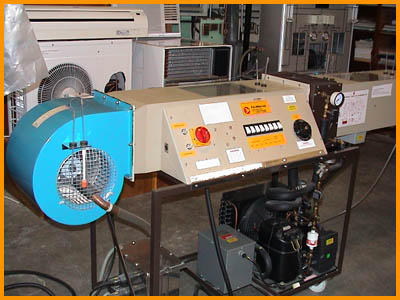
Thermal Refrigeration Training Unit Model 9501 Commercial Unit. Demonstrates vapor compression refrigeration system with two evaporators and working of three different expansion devices
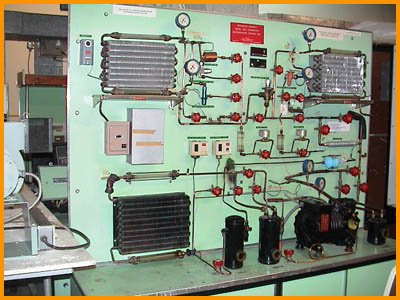
RC712 Computer Linked Refrigeration Laboratory Unit. Demonstrates vapor compression refrigeration system
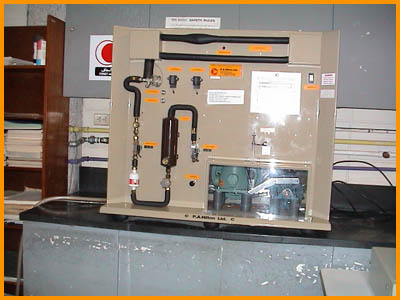
Demonstrative cycle refrigeration unit. Demonstrates the phenomena of condensation and evaporation in a vapor compression system
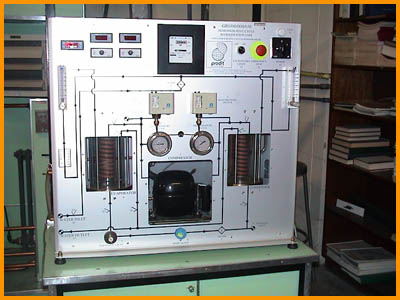
Models of Window Type A/C unit and Split Type A/C
